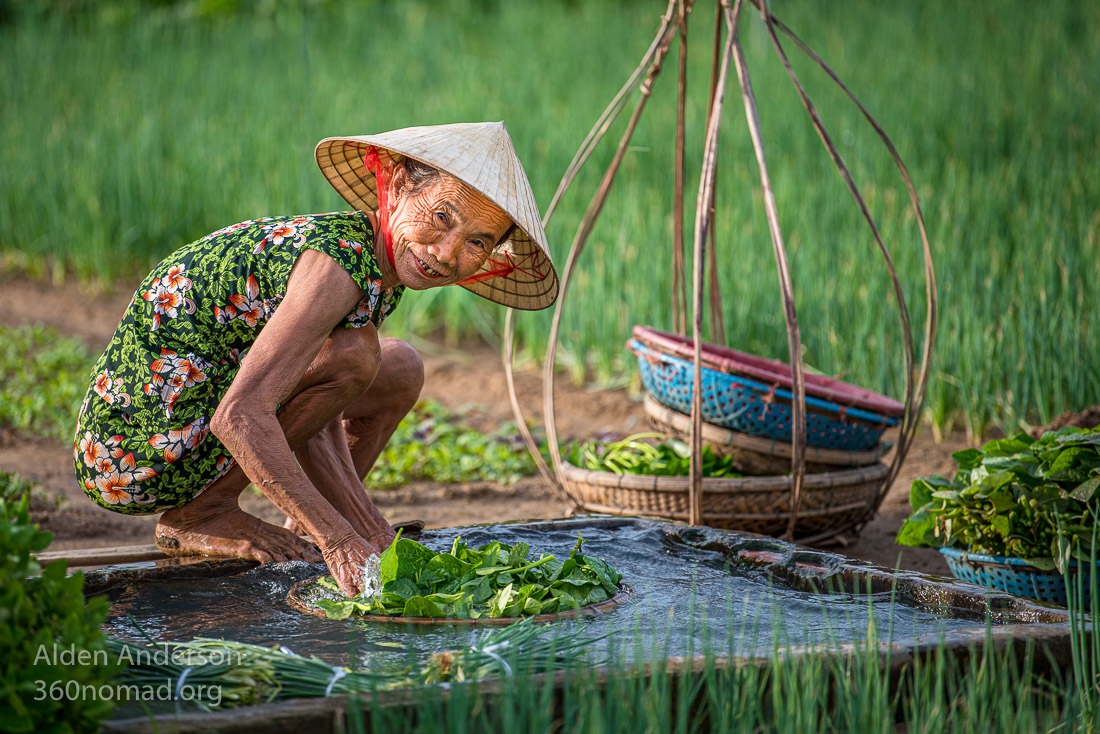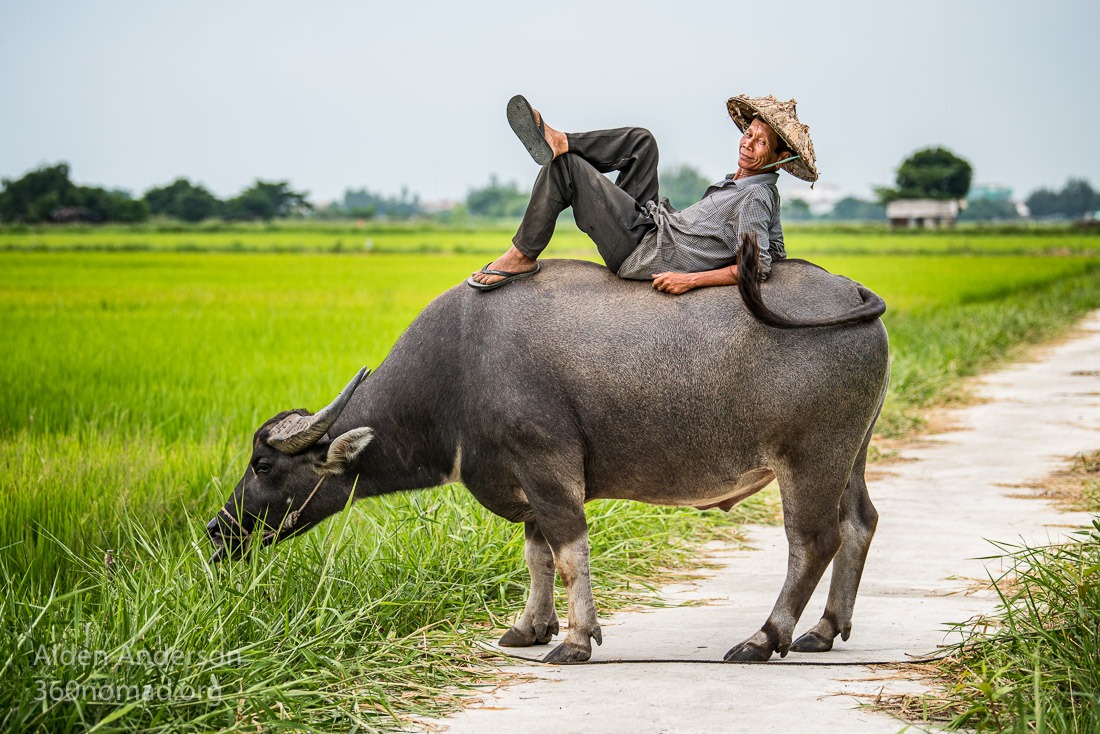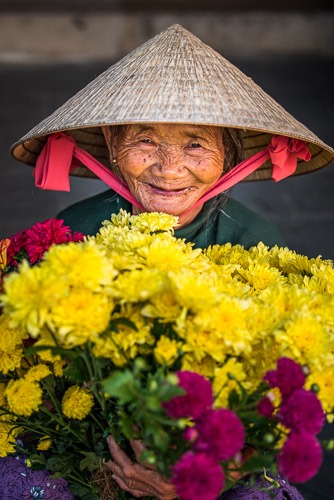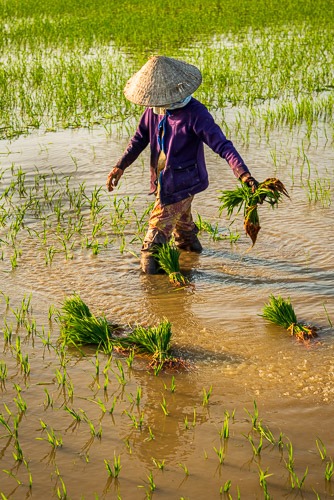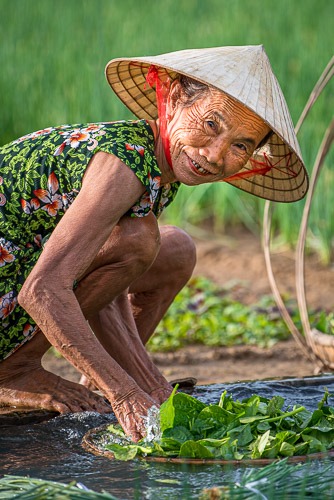Where To Take Photos In Hoi An, Vietnam
The 10 Best Places to Take Photos in Hoi An
1. Hoi An Ancient Town
2. Tra Que Vegetable Village
3. Duy Hai Fishing Village
4. Cam Kim Island
5. The Rice Fields along Hai Ba Trung Street
6. Nipa Palm Forest
7. Rivers around Hoi An
8. Cua Dai Bridge
9. Small Villages around Hoi An
10. Hoi An Markets
Most people come to Hoi An to see the Old Town. However, the charm of Hoi An can also be experienced outside of the Old Town. Exploring lush rice fields with the sweet smell of rice ready for harvest, smiling farmers, and small charming villages where life goes on at a slower more relaxed pace.
I’ve written a few articles over the years on where to take photos in Hoi An Old Town which can be found here and here. With this article, I will further expand on the best locations in and around Hoi An to take pictures.
Most of the locations listed are specific areas around Hoi An to take pictures, while others are a place to start. Places and suggestions for you to explore on your own. So, get out, do a tour, rent a bicycle, rent a motorcycle, or just head out on foot to explore the essence of Vietnam, a quintessential slice of the charm and beauty that makes this such a wonderful and unique country.
1. Hoi An Ancient Town
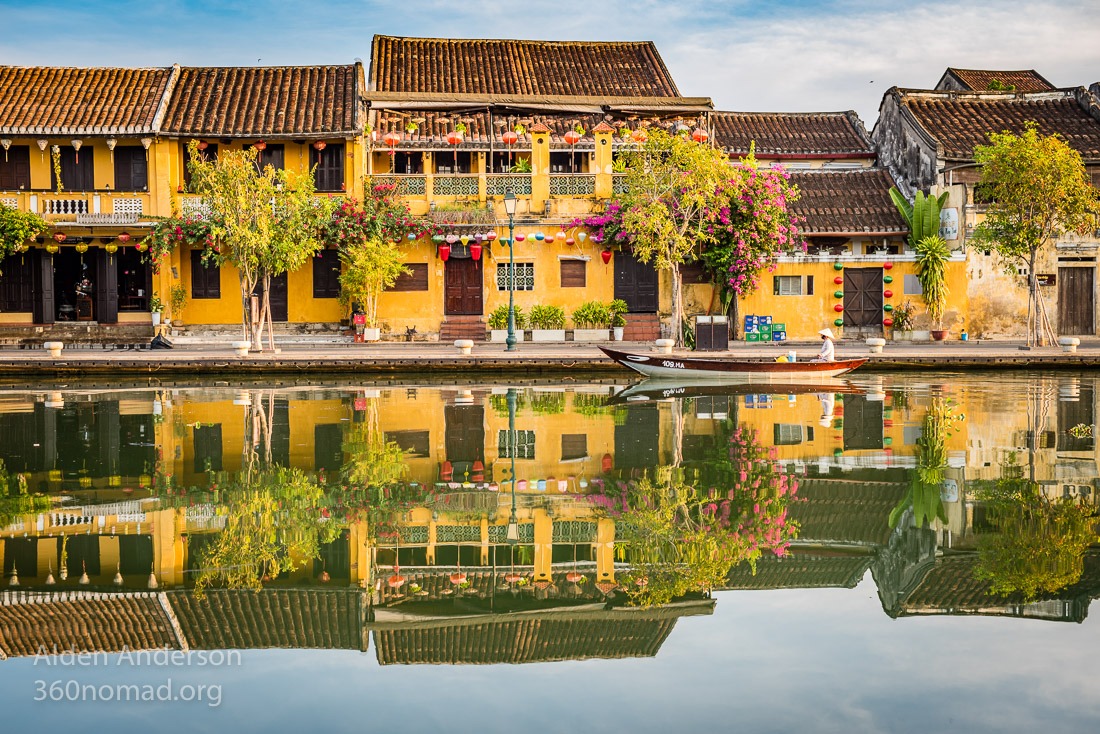
A beautiful and peaceful morning reflection of Hoi An Ancient Town.
About Hoi An Ancient Town
You probably came to Hoi An to see the Old Town! So this is number one on the list. If you have the will power, set your clock to wake you when in still dark and venture to the Old Town to see the sunrise over the Thu Bon River. It’s my favorite time in Hoi An. Cooler, fewer tourists and more locals. Keep an eye out for the vendors going to and from the Hoi An Central Market.
In the evening is another magical time in Hoi An Ancient Town (most people prefer the evening in Hoi An, over waking up with the roosters).
Getting to Hoi An Ancient Town
Hoi An Ancient Town runs along the Thu Bon River. The Hoi An Market is on the east end of town while the Japanese Covered Bridge is on the West side. The main streets run parallel to the river so you can use either of these as a starting point and work your way through the streets and alleys.
Getting to the Old Town is simple enough depending on where you are staying. Rent a bicycle, take the electric shuttle or hire a taxi.
2. Tra Que Vegetable Village
About Tra Que Vegetable Village:
Tra Que is possibly the oldest and definitely the most well-known farming village in Hoi An. Everything grown here is organic. The village itself is very real (it isn’t made for tourists) but on an average day, there can be very large groups of tours that come here (multiple groups of 30 people). However as quickly as the groups come they disappear and then it’s hard to imagine there were that many foreigners there at all.
Where is Tra Que Vegetable Village?
Tra Que Vegetable Village is labeled on Google Maps. It is located along Hai Ba Trung Street about 3 kilometers from Hoi An Old Town on the way to An Bang Beach.
If you are staying in Hoi An you can rent a bicycle and explore the village on your own. There are also many tours that can take you there. Early in the morning is a good time to visit.
3. Duy Hai Fishing Village
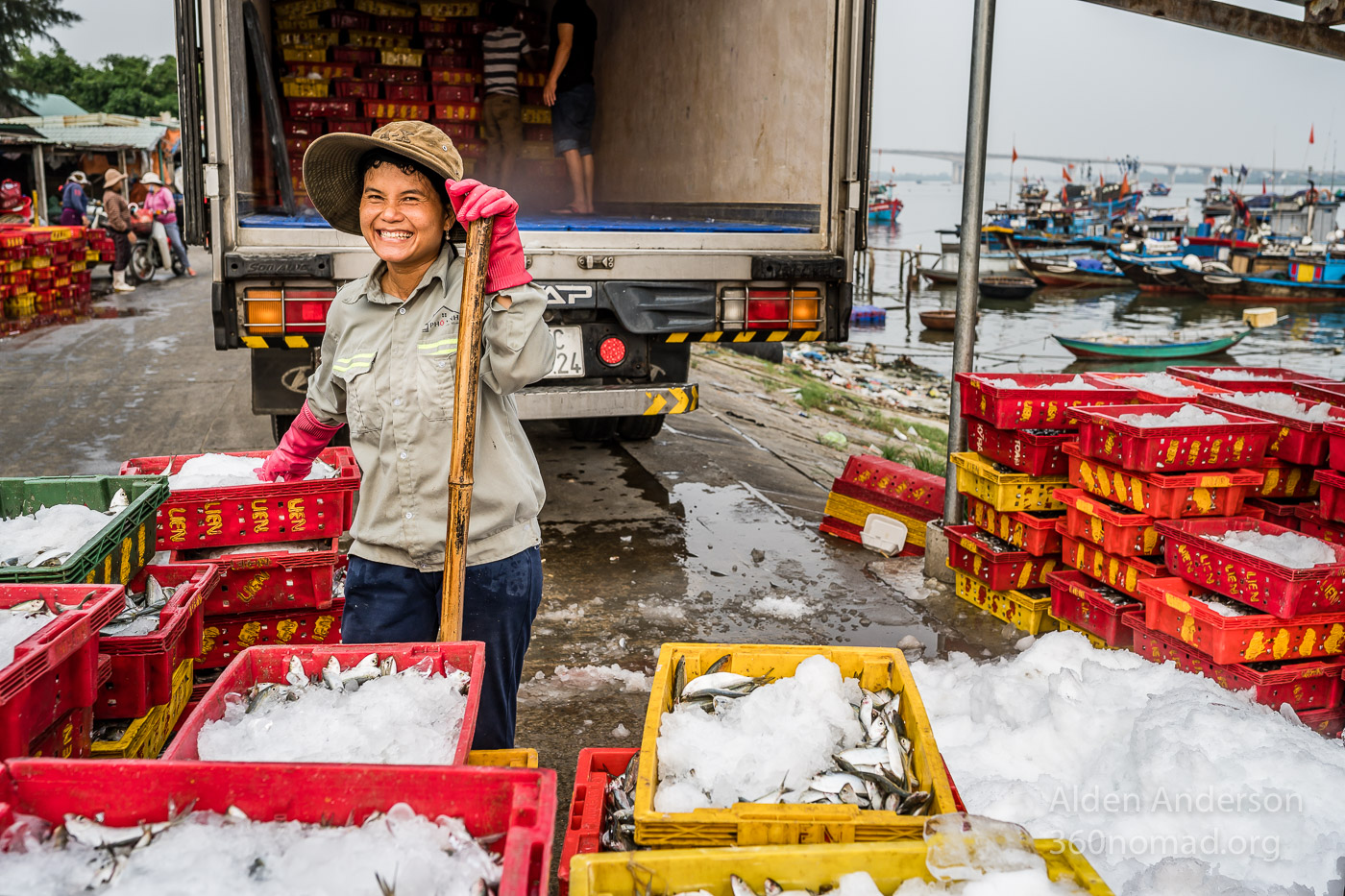
Duy Hai Fishing Village. Packing the fish on ice for export outside of Hoi An.
About Duy Hai Fishing Village:
Duy Hai Fishing Village is perhaps the easiest to access traditional Vietnamese fishing village around Hoi An. On a given morning you can expect a constant stream of fishing boats coming in from a night on the water. The chaos that sometimes ensues between traders trying to get the first pick of the fresh fish as it’s unloaded can be quite the sight for sore eyes.
You will definitely want to be here early in the morning (sunrise) as that is when the boats of fish come in.
Where is Duy Hai Fishing Village?
The Duy Hai Fishing Village is marked as Bến đò Duy Hải on Google Maps. Go across the Cửa Đại bridge, then take the first left. It’s about 10–15 minutes from the Old Town by car.
Trinh and I run photography tours here (Hoi An 360) and you can interact with the locals and get better photos. Otherwise, you can try it on your own, just respect the merchants and customers. It’s a very faced-paced high-energy environment with so many scenes to photograph or even to just stand back and watch everything unfold.
4. Cam Kim Island
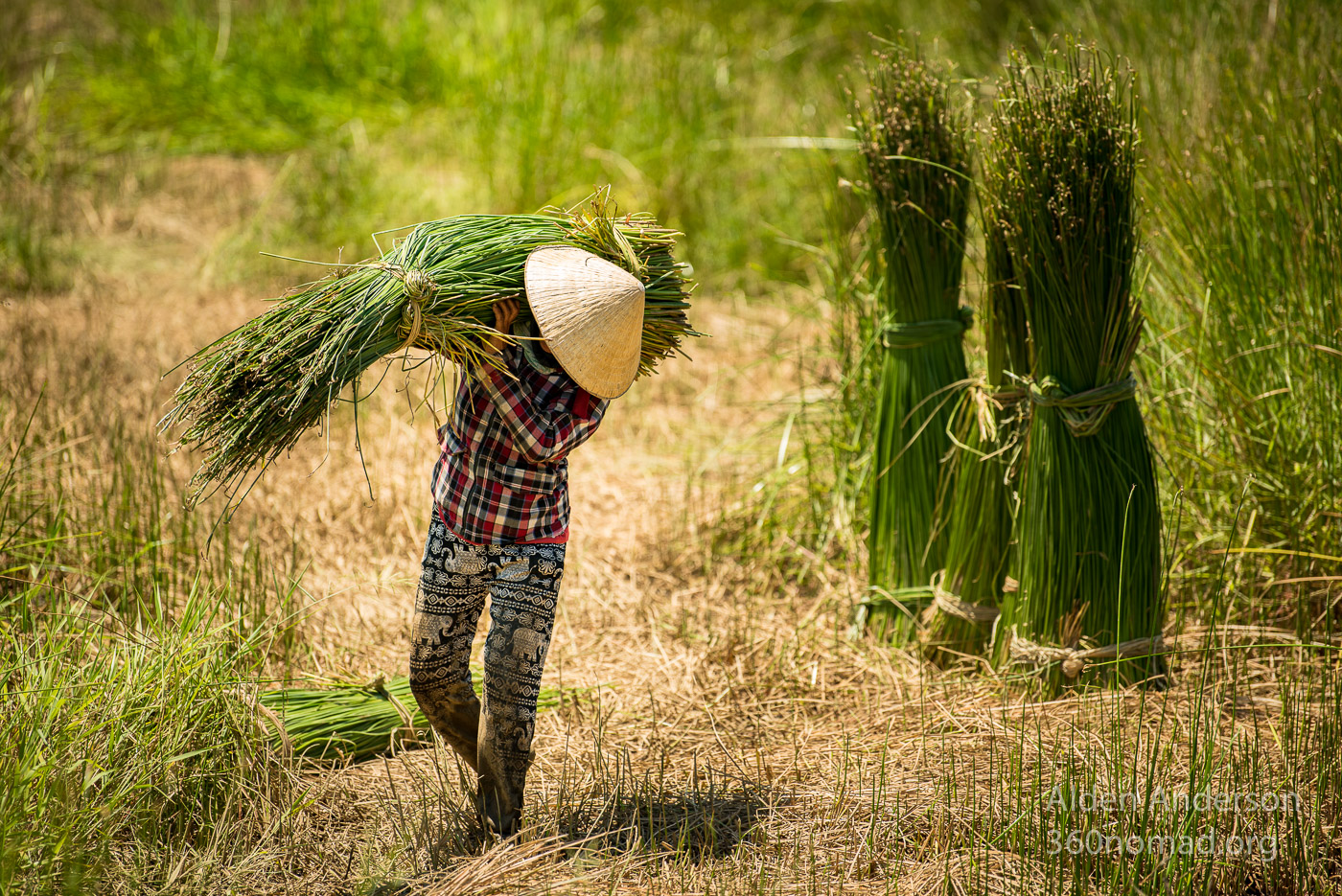
Harvesting sedge for weaving mats on Cam Kim Island.
About Cam Kim Island:
Cam Kim is a beautiful rural island of small agricultural and craft villages and dotted with rice fields, gardens, and fishing boats. Despite the fact that it’s quite close to Hoi An Old Town, Cam Kim Island can feel like a world away.
If you want to experience life in the countryside of Vietnam close to Hoi An Old Town, Cam Kim is the perfect place.
Where is Cam Kim Island?
Cam Kim Island is about 1 kilometer South and West of Hoi An Old Town. Up until 2016, you could only access the island via ferry.
To get directions in Google Maps use Cẩm Kim. There are 2 bridges to access Cam Kim from Hoi An. A two-lane metal motorbike/pedestrian bridge and a newly (2021) built bridge to support cars (Cầu Cẩm Kim mới). A bicycle is the best way to explore Cam Kim Island and enjoy the slower pace of life.
5. The Rice Fields along Hai Ba Trung Street
About the Rice Fields along Hai Ba Trung Street:
Most visits to Hoi An will drive through the rice fields on the way to the ancient town. These are perhaps the most accessible rice fields in Hoi An. The perfect place to explore by bicycle in the morning or late afternoon. Depending on the time of year you might find lush green rice glowing in the afternoon sun or fields of golden brown just before the rice harvest. Năm, (pictured) can often be found with his buffalo along the side of the street ready to pose for tourists with his buffalo.
Where are the rice fields?
Hai Ba Trung Street runs from Hoi An Old Town to An Bang beach. If you are driving from Da Nang it’s typically the street taken to get to the old town. This street also runs right through Tra Que Vegetable Village mentioned earlier.
The best way to see the rice fields is by bicycle or on foot. Avoid the mid-day heat by going early or late in the day. There are usually farmers around working in the fields. If you see Năm with his buffalo feel free to support him. He is a farmer who earns most of his income by letting tourists pose with his buffalo or letting people take photos of him with his buffalo. Incidentally, we gave him a nice framed version of this photo which he proudly displays in his home.
6. Nipa Palm Forest
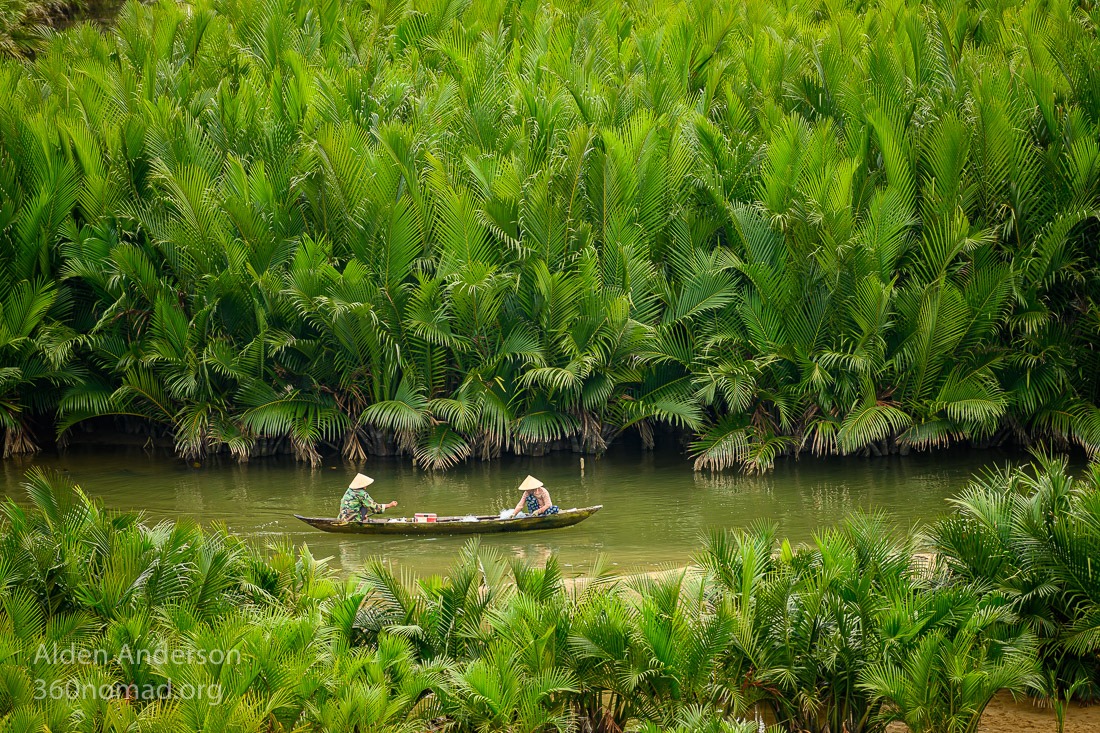
A couple, fishing in the Nipa Palm Forest not far from Hoi An Ancient Town.
About the Nipa Palm Forest:
The Nipa Palm Forest provides palm leaves to build the roofs of many open-air structures around Hoi An. The leaves are cut and then dried in the sun before being strung together on frames of bamboo. A roof built with palm leaves is much cooler than a corrugated metal roof.
The palms grow in the water so there are numerous channels and it’s a popular place to do basket boat tours.
Where to find the Nipa Palm Forest?
The Nipa Palm Forrests run along the banks of the Thu Bon River. They are concentrated on the north side of the river around the Cua Dai Bridge.
The popular basket boat tours in Hoi An will take you through the Nipa Palm Forests.
7. Rivers around Hoi An
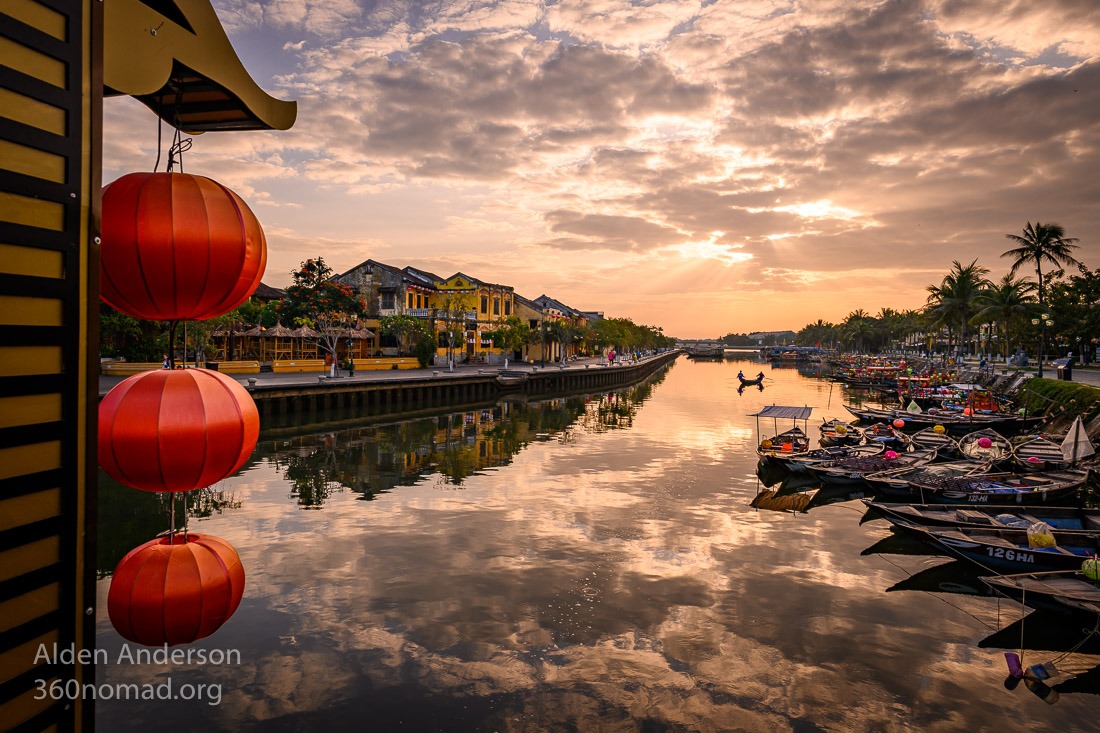
Sunrise on the Thu Bon River in Hoi An
About the Rivers around Hoi An:
The Thu Bon River is what I consider the focal point of Hoi An. For hundreds of years, ships from around the world sailed through here to dock in what was once a thriving trading port.
The river running through the ancient town is just one branch of the Thu Bon River. Hoi An is in the middle of an estuary with countless branches of the river. The rivers around Hoi An are an integral part of the life of the locals.
Where are the rivers around Hoi An:
The Thu Bon River has many branches through the countryside of Hoi An. Early in the morning and late in the afternoon are the best times to shoot. Not only will you have the best light, but these are the busier times on the river. The best time during and after sunrise.
8. Cua Dai Bridge
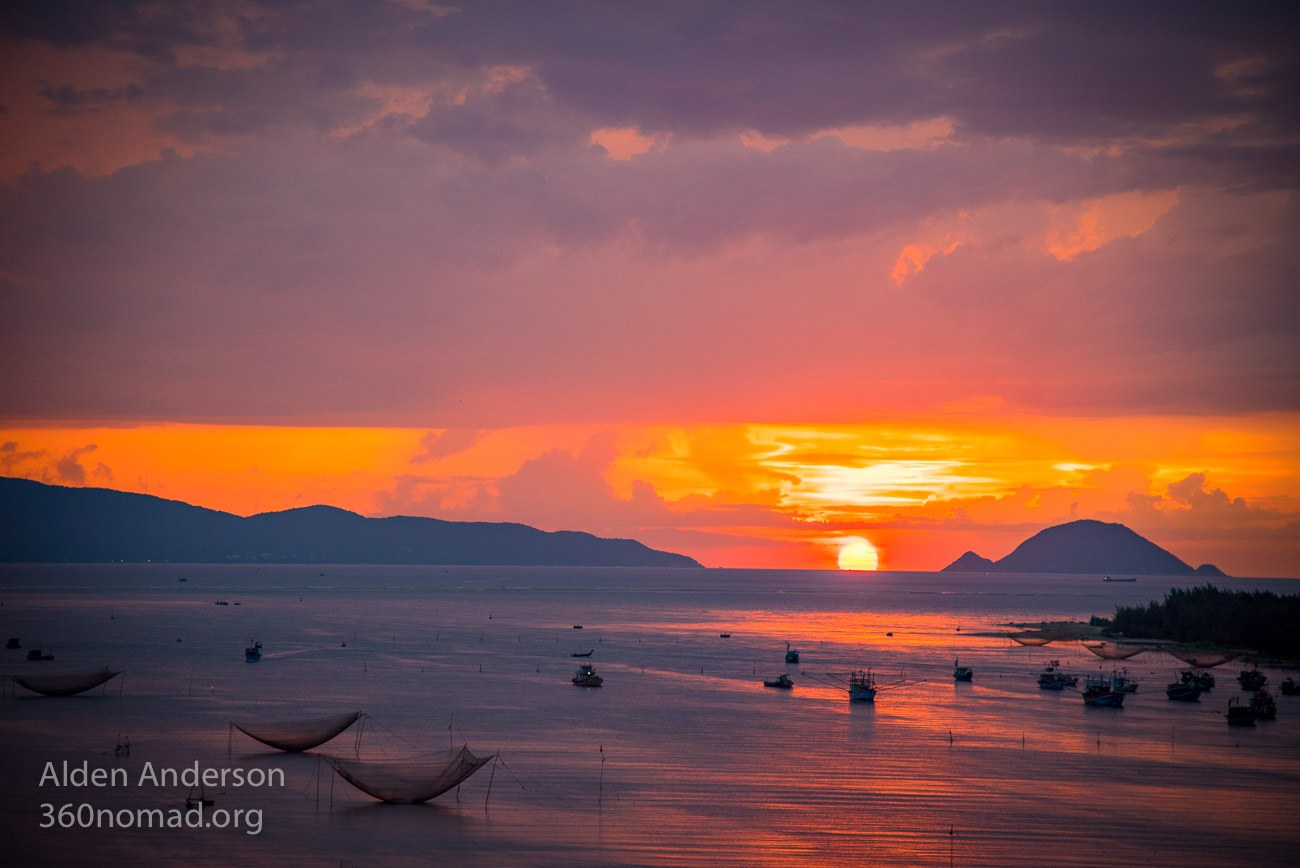
Sunrise from the Cua Dai bridge in Hoi An. On the right is Duy Hai Fishing Village with the Cham Islands in the background
About Cua Dai Bridge:
The Cua Dai Bridge spans the estuary of the Thu Bon River. Imagine in years past a fleet of ships passing through here hailing from ports around the world. After hundreds of years as a thoroughfare to Hoi An, the Cua Dai estuary is now mostly filled with fishing boats and large nets. It’s a nice place to see the sunrise as well as the sunset. Sunrise (pictured) is my favorite time to visit the Cua Dai Bridge.
Where is the Cua Dai Bridge?
The Cua Dai Bridge is Southeast of Hoi An Old Town spanning the Thu Bon River and is marked as Vịnh Cửa Đại, on Google maps. Looking Southeast from the Cua Dai Bridge one can see Duy Hai Fishing Village and off in the distance you can make out the Cham Islands.
9. Small Villages in the Countryside of Hoi An
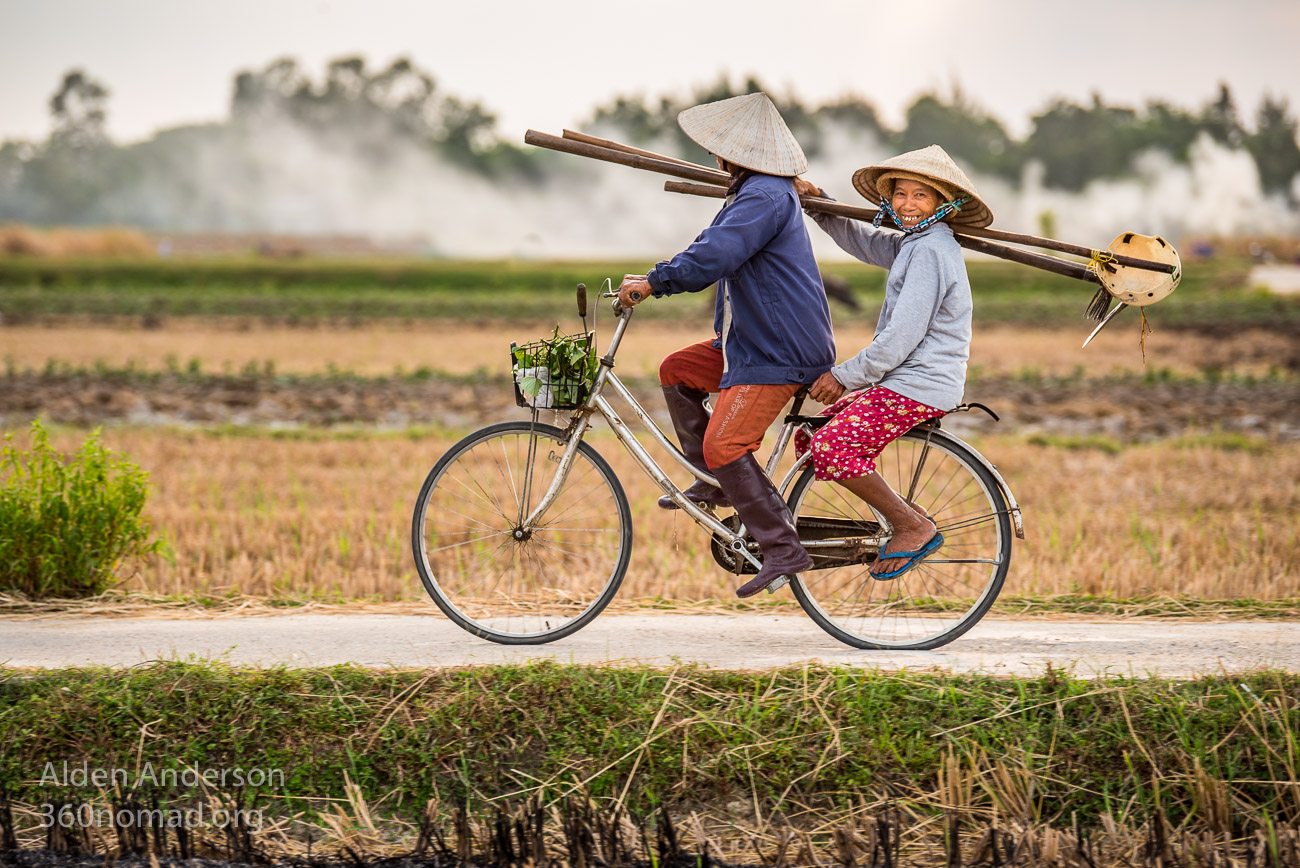
Going home after a long day working in the fields around Hoi An.
About the villages and Countryside around Hoi An:
Most of the items I’ve listed are specific locations. However, I wanted to give a few that are more of a general idea of where to go. To leave it up to you to explore. There are countless small fishing and farming villages surrounding Hoi An. The further you go, the less touristy things generally are. You can rent a bicycle, motorbike, or just proceed on foot. Even right around Hoi An Old Town, there is lots to explore. Small alleys and tucked away restaurants where the locals frequent. Little neighborhoods and small family farms. Small streets where locals hang out and people watch late in the afternoon.
Where are the villages around Hoi An?
I’ve listed a few of the villages around Hoi An such as Tra Que and Duy Hai Fishing Village. However, I recommend just renting a bicycle or motorbike and exploring the countryside around Hoi An. People are very friendly and while there may be a language barrier I think you’ll find it very rewarding and the people are quite warm and welcoming.
10. Markets in Hoi An
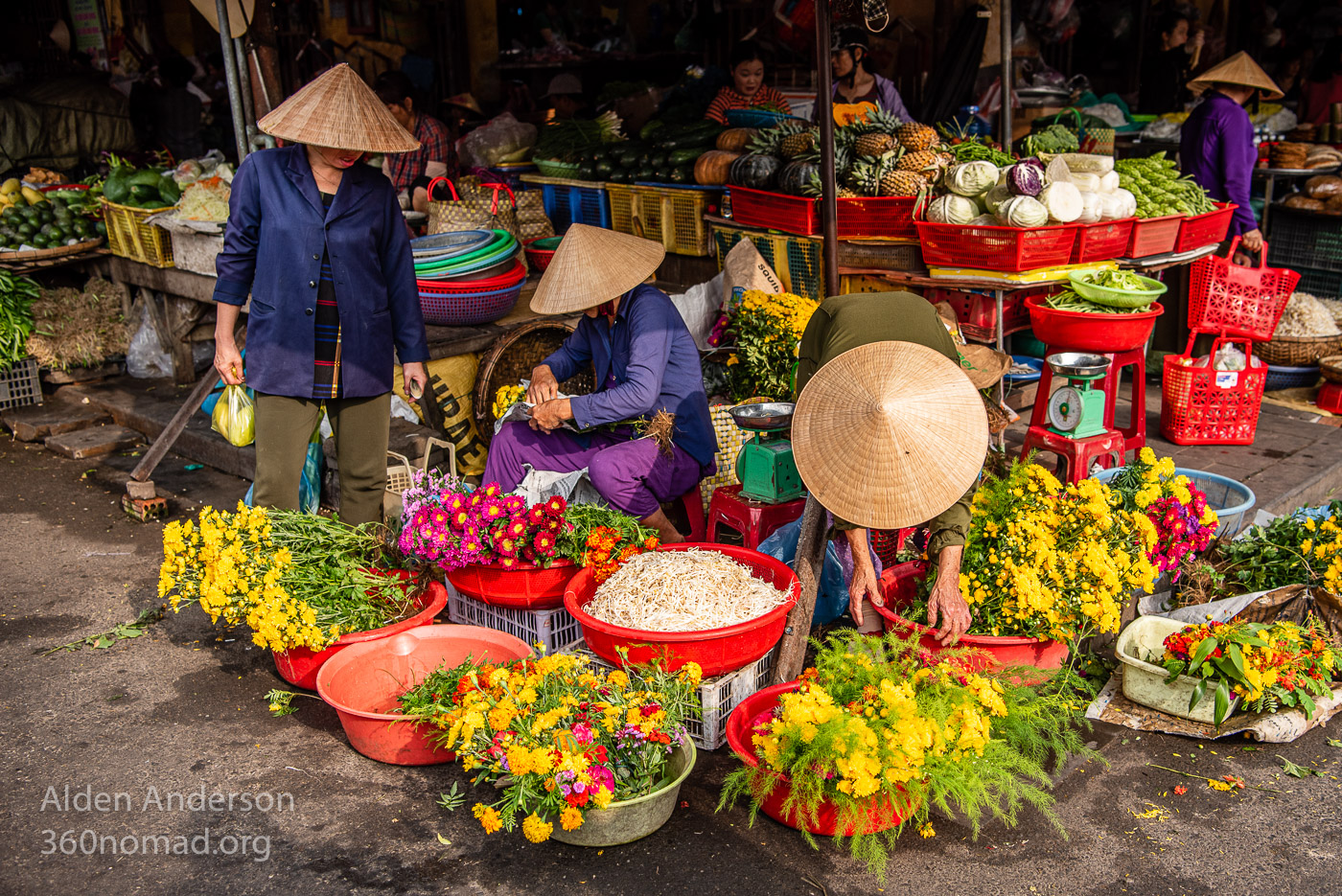
A busy morning selling flowers at the Market in Hoi An Ancient Town.
About the Markets in Hoi An:
If you’ve never been to a market in Vietnam you’re in for a treat. There is a kind of frenetic energy of farmers selling their goods while the locals rush through on foot or by motorbike calling out what they want while the sellers shout, laugh and joke with each other. It can be a somewhat overwhelming experience with throngs of locals pushing through the narrow street, your nose is filled with the smell of fish, crates of live chickens and ducks and a bedazzling display of color. The perfect place for photographers! As a note, don’t stand in front of someone’s stall for too long as this is their storefront. Be respectful and maybe even buy something to support them.
Back to Top
Where are the Markets in Hoi An?
There are a number of markets in and around Hoi An. The Central Market is at the eastern end of Hoi An Ancient Town. This is the largest and busiest market in Hoi An. Other smaller markets include the Tiger Market north of Hoi An Old Town and the Ba Le Market north-east of the old town.
The best time to visit the markets is typically first thing in the morning. This is typically when the markets are the busiest. At night on An Hoi Island, you’ll find the Hoi An Night Market mostly catering to tourists.

